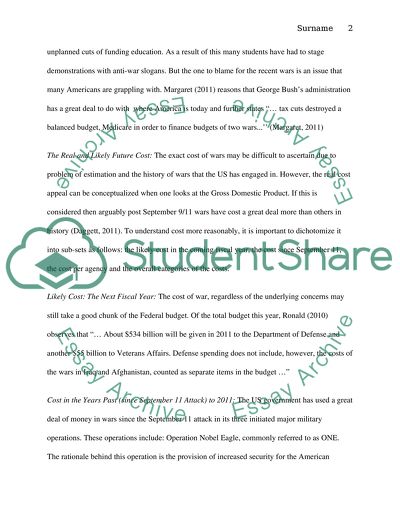Cite this document
(“US Cost of Recent Wars: Is It Worth It or Is It An Economic Burden Research Paper”, n.d.)
Retrieved from https://studentshare.org/history/1425834-us-cost-of-recent-wars-is-it-worth-it-or-is-it-an-economic-burden
Retrieved from https://studentshare.org/history/1425834-us-cost-of-recent-wars-is-it-worth-it-or-is-it-an-economic-burden
(US Cost of Recent Wars: Is It Worth It or Is It An Economic Burden Research Paper)
https://studentshare.org/history/1425834-us-cost-of-recent-wars-is-it-worth-it-or-is-it-an-economic-burden.
https://studentshare.org/history/1425834-us-cost-of-recent-wars-is-it-worth-it-or-is-it-an-economic-burden.
“US Cost of Recent Wars: Is It Worth It or Is It An Economic Burden Research Paper”, n.d. https://studentshare.org/history/1425834-us-cost-of-recent-wars-is-it-worth-it-or-is-it-an-economic-burden.


